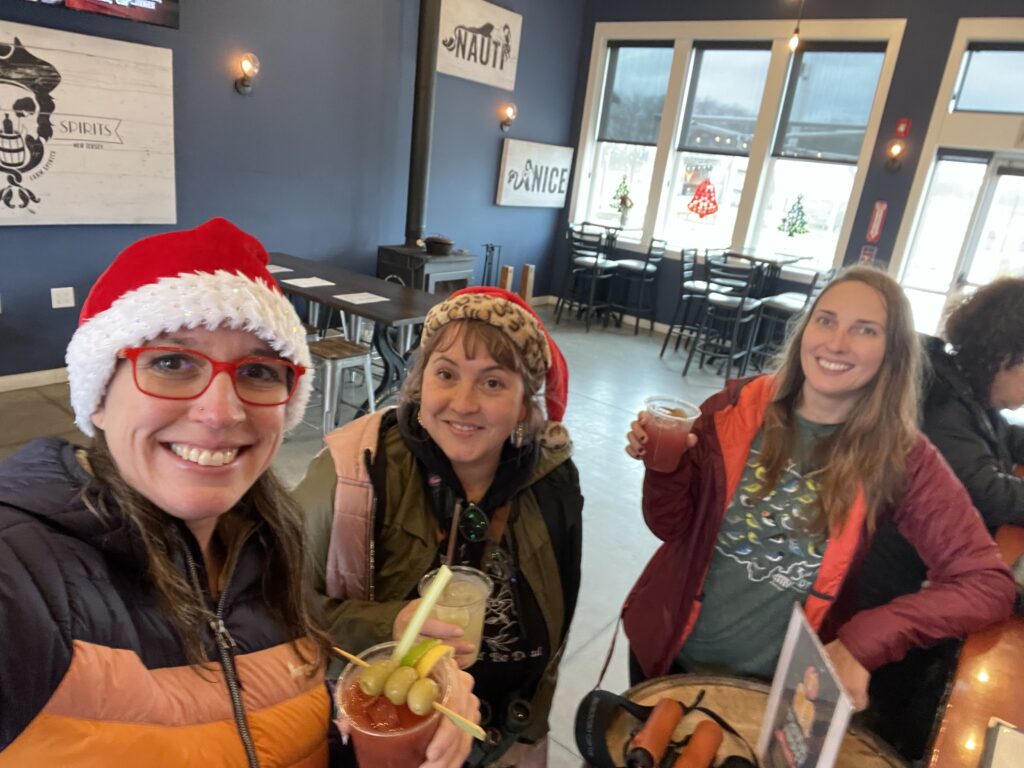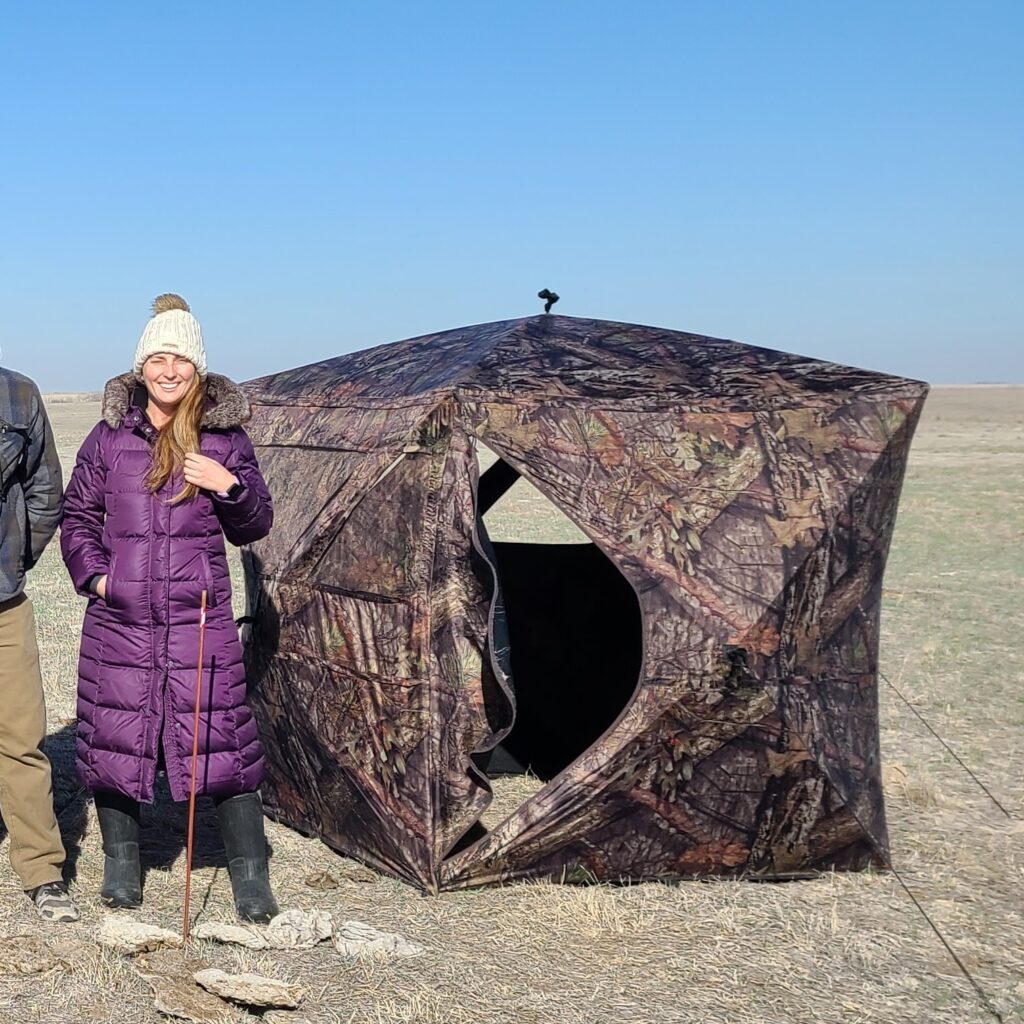This year, my “big birding vacation” was that I signed up for a dream trip in the form of Kansas lek treks! On 4/14 I visited a lesser prairie-chicken lek and got to start the morning with some dancing chickens. The afternoon would see a possible tough miss of unpreparedness, where flying by the seat of my pants, I didn’t learn the thick-billed longspur song. I may have heard one birding my way to Garden City, but I console myself with that it stopped singing and I was never able to find the unknown bird. The next day was pretty magical though: I made it into mountain time to see a scaled quail perched up on a fence post in the early light. It was truly lucky because perhaps in part due to the awful weather, it was the only one I saw, and never reappeared once it flushed. I also am pretty sure I heard a Cassin’s sparrow, but it never sang again, and everything was hunkered down as the windy cold rain set in.
Migration would kick off with me getting to hear a Cerulean warbler for the first time in years! We’d also get some “backyard” excitement with a very red curlew sandpiper right at the meadows mid-May! The most fun part of this bird was doing a true from work chase, where a coworker got it as a lifer and we all got to bond over a rarity convergence.
I then would get to see a great birder friend that now lives a country away twice this year in NJ! She would have to put up with me being sick the first visit, and the 2nd came at a very busy time…but, we carved out some quality time to hang and look at birds nonetheless!
My next lucky 24 hours would come on an incredible pelagic weekend! I was able to race up to Brig to see a bar-tailed godwit on 6/18 before turning right around to finish packing ahead of boarding the boat that night. The next day, on our way back near Elephant’s Trunk(!) an obliging South Polar skua made a slow pass right in front of the boat. My lifer was once again celebrated with the friends I’ve made over these many boat trips, including the crew of the Cape May Whale Watch & Research Center (can’t say enough good about these trips, and excited to take my next venture early in the new year…get signed up!).
On 7/2 the recurrence of a little egret at Bombay Hook would bring some excitement to the summer doldrums. I made a round trip go of it, driving around to get there early and then taking the ferry back. The latter half of the year, I was thankful to be asked to guide for the Cape May fall festival! I got to guide and bird with old friends, and meet some new ones! As always, a chaotic and wonderful weekend greeted us with the unexpected and plenty of enthusiasm from all involved.
The onset of winter birding would be heralded by a black guillemot irruption, and on 11/5 I got to see this much-wanted lifer. It left me with the mark of the beast on my eBird lifer tally (ha! …an incomplete life list though, as there are many Costa Rican birds from my 1st trip that aren’t recorded there). So, I was itching to put an new bird in the books…and what a bird that would be! The really wacky lifer of the year for many of us would be the red-flanked bluetail that I finally got to see on 12/22.
On 12/17 I was honored to take on section 3SE of the Cape May CBC, and got to spend the day birding with and among some of my best friends of south Jersey!

Incredibly 2023 still had some bang left in it as I closed out the year in FL. I waded through the inaccurately named “dry bones trail” of the Cape Coral rotary park to hear my nemesis mangrove cuckoo on 12/29! The water was too deep for me to get through the connector with the boots I had (knee-high wellies would have done the trick). But, just on the other side on the mangrove alcove trail, some lucky birders got great looks the following day! (I never would catch a glimpse, but, next year goals…) I also always enjoy getting to see the Florida subspecies of red-shouldered hawk. Also in the realm of neat color morphs that show up in FL, I got to see the “great white heron!” My final lifer of year was a true New Year’s Eve last min bird: American flamingos still hanging out, presumably, from the hurricane displacement on a sand bar. My mom, a family friend and I went on a the afternoon dolphin & wildlife cruise which left at 1:30 PM to see them, which overall was just a great way to spend the last day of 2023.
Happy new years…and as usual…what will 2024 bring us?!

